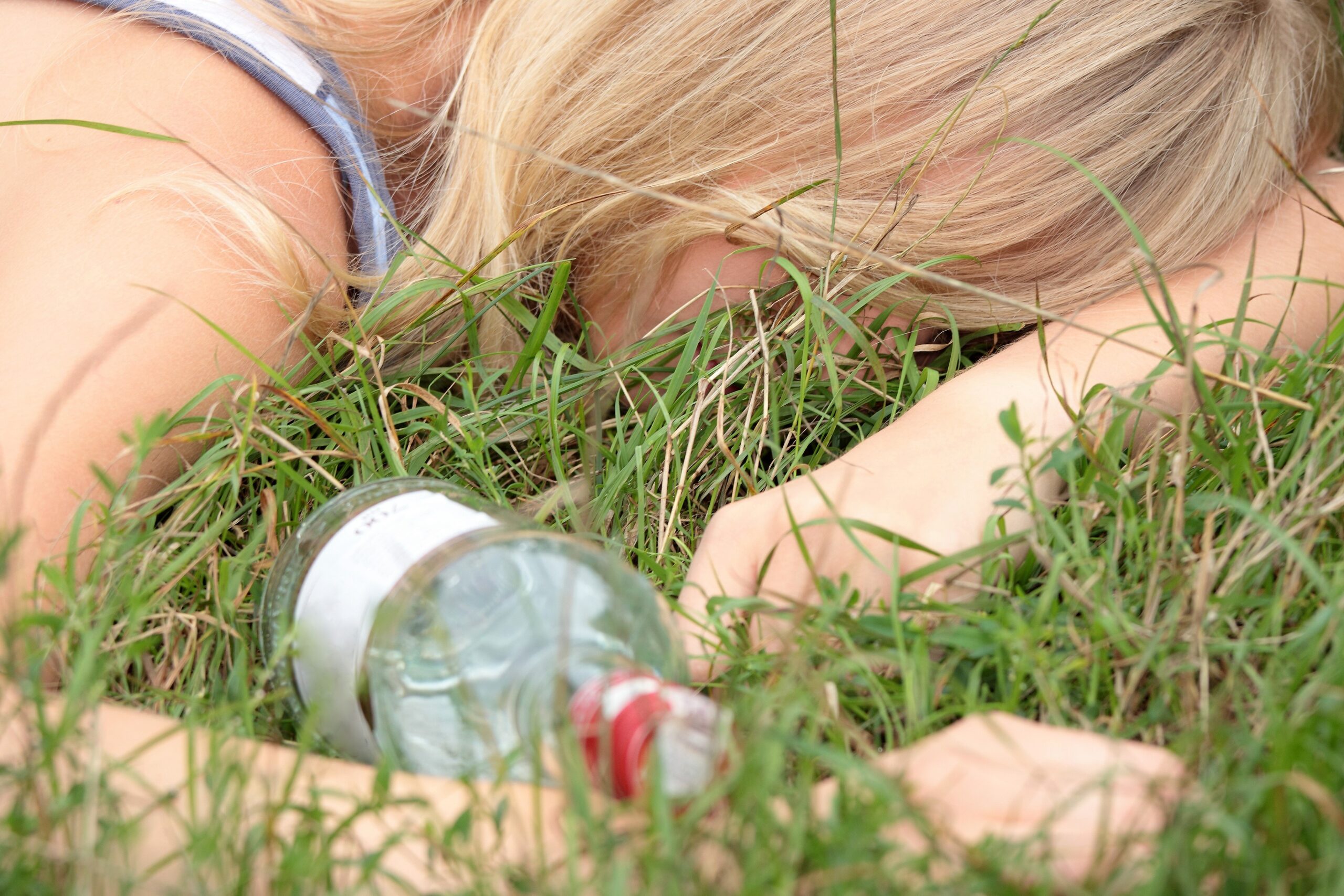Recently, a new drinking trend known as BORG has gained popularity on social media, particularly in the US. BORG, which stands for “blackout rage gallon,” is increasingly being adopted by college students and young adults. They mistakenly believe it offers a safer way to consume alcohol, but this trend promotes dangerous drinking habits. What exactly is a BORG, and why are so many young people advocating for it despite its inherent risks?
Understanding BORG
The term BORG stands for “blackout rage gallon.” It involves filling a gallon jug halfway with water, adding a fifth of vodka or another type of alcohol, and then mixing in flavoring agents like water-enhancing drops or powdered drink mixes. This concoction is believed to offer a safer drinking alternative as it allows individuals to carry their own sealed container, thus minimizing the risk of drink spiking. Additionally, enthusiasts claim that BORGs help reduce hangovers and other negative effects of alcohol by keeping drinkers hydrated and maintaining electrolyte levels.
On TikTok, the hashtag #borg has amassed over 74.7 million views, reflecting its widespread popularity. However, while the concept may seem innovative, it poses significant health risks.
The Risks of BORG Drinking
The risks of binge drinking are indeed significant. Research suggests that alcohol causes at least seven types of cancer, and the World Health Organization has stated that no amount of alcohol consumption is safe for health.
This method of drinking can deceive individuals into thinking they are consuming less alcohol than they actually are. The US National Institute on Alcohol Abuse and Alcoholism defines a standard drink as containing about 14 grams of pure alcohol, which is roughly equivalent to a 12-ounce beer (about 5% alcohol), a 5-ounce glass of wine (about 12% alcohol), or 1.5 ounces of distilled spirits (about 40% alcohol). A typical BORG, which includes a fifth of alcohol, equates to approximately 17 standard drinks. Often, measurement errors can lead to unintentional overconsumption.
The Centers for Disease Control and Prevention (CDC) defines binge drinking as consuming five or more standard drinks on one occasion for males, and four or more for females. BORGs can easily exceed these limits, raising the risk of alcohol poisoning and other severe health issues. Your liver can only process about one ounce of alcohol per hour. Excessive drinking overwhelms the liver, causing a dangerous buildup of alcohol in the bloodstream.
For one thing, BORGs are extremely large, containing a substantial amount of alcohol, explains Medical professional. When served a large-sized beverage, people tend to consume much more than they typically would. This can lead to higher levels of intoxication and, in severe cases, life-threatening alcohol poisoning.
Young people might think they’re reducing their risk of hangovers and dehydration by adding electrolytes and a significant amount of water to the BORG. Despite the inclusion of water and electrolytes, alcohol’s diuretic properties can still cause dehydration, potentially leading to electrolyte imbalances.
Moreover, adding sweeteners or flavor enhancers can mask the alcohol’s taste, causing individuals to drink more than they normally would and increasing the risk of alcohol poisoning. If caffeine is added, it can further dehydrate the body and its stimulant effects can conceal the depressant effects of alcohol, misleading individuals about their level of intoxication.
Additionally, intoxication impairs judgment and coordination, leading to accidents and injuries.
The trendiness of BORGs makes them especially appealing to young people, offering a sense of belonging and customization. The social media aspect means that young people encounter this practice not just at parties, but everywhere.
Young people are attracted to these drinks because they can personalize the ingredients and give them creative names that reflect their personalities, such as Ruth Bader Gins-borg, Arnold Borg-inator, and Justin Bie-borg.
Alcohol Poisoning: Rapid consumption of large amounts of alcohol can cause alcohol poisoning, a life-threatening condition characterized by suppressed breathing, seizures, and loss of consciousness.
Accidents: Binge drinking impairs coordination and judgment, increasing the likelihood of accidents such as car crashes, falls, and injuries.
Liver Damage: Excessive alcohol consumption can lead to both acute and chronic liver damage, including alcoholic hepatitis and cirrhosis.
Heart Issues: Binge drinking can cause irregular heartbeats, high blood pressure, and elevate the risk of heart disease.
Mental Health Problems: It can worsen mental health conditions like depression and anxiety and trigger alcohol-induced mood swings.
Risky Behaviors: Engaging in risky behaviors such as unprotected sex is common with binge drinking, leading to unintended pregnancies and sexually transmitted infections.
Memory Impairment: Binge drinking negatively affects memory and cognitive function, impacting academic and professional performance.
Legal Troubles: Intoxicated behaviors can result in legal issues, including DUI arrests and criminal charges.
Blackouts: Binge drinking can cause blackouts, leading to memory loss of events during intoxication and placing individuals in risky situations.
Addiction: Frequent binge drinking can lead to alcohol dependence or addiction, with long-term physical and psychological consequences.
Strained Relationships: Erratic behavior and impaired judgment from binge drinking can damage relationships with family and friends.
Financial Strain: Regular binge drinking can be expensive and result in financial difficulties due to spending on alcohol.
Physical Health Problems: Binge drinking can cause various health issues, including gastrointestinal problems and weakened immune function.
Case in Point: University of Massachusetts Incident
In March 2023, 46 students from the University of Massachusetts Amherst were hospitalized for alcohol poisoning after participating in a BORG challenge. This incident underscores the dangers of this drinking trend. Alcohol poisoning occurs when blood alcohol levels rise too quickly for the liver to process, leading to symptoms like hallucinations, dizziness, loss of consciousness, difficulty breathing, nausea, and vomiting.
The Misconception of Safety
BORG enthusiasts argue that using personal containers helps prevent drink spiking and that the mixture’s high water content can mitigate hangovers. However, alcohol is a diuretic, meaning it increases urine production and can lead to dehydration, exacerbating hangover symptoms despite efforts to stay hydrated. Additionally, without precise measurements, it’s difficult to track alcohol consumption, increasing the risk of overconsumption and health complications such as pancreatitis.
Chronic alcohol abuse can result in dependence, withdrawal symptoms, and long-term health problems, including persistent nausea and stomach pain. Moreover, the misconception that BORGs are safer than communal drinking methods (like punch bowls) is flawed due to the large quantity of alcohol involved.
Safer Alternatives
While BORGs might seem like a safer option compared to communal drinking, they carry significant risks. Safer drinking practices include using smaller, personal containers, accurately measuring alcohol intake, and staying hydrated. Recognizing personal limits and knowing when to stop drinking are crucial. A breathalyzer can help monitor alcohol levels, ensuring they remain within safe limits.
Listening to your body’s signals and understanding the impact of alcohol is essential for safe drinking. Ultimately, the only true remedies for hangovers are rest, time, and hydration.
while BORGs may seem like an innovative way to consume alcohol, the associated risks far outweigh the perceived benefits. Education on safe drinking practices and awareness of the dangers of trends like BORG are crucial to preventing alcohol-related harm among young adults.























